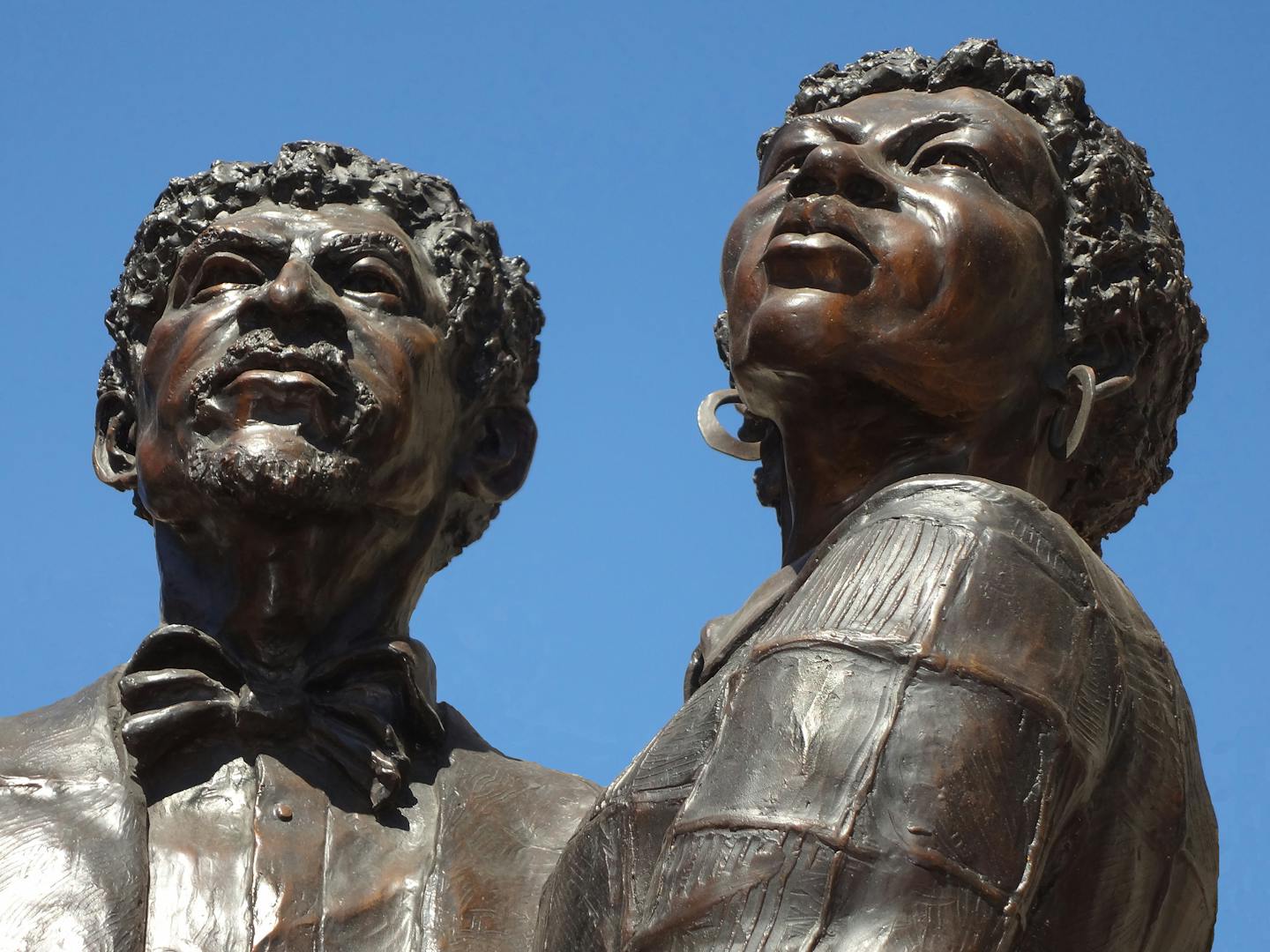Listen and subscribe to our podcast: Via Apple Podcasts | Spotify | Stitcher
Events that occurred more than 180 years ago in the frontier area that became Minnesota arguably laid the groundwork for the Civil War — decades before that conflict began.
The U.S. Supreme Court's historic 1857 Dred Scott decision, which ruled that Black people were not citizens, traces its roots to the Twin Cities area. A reader who wanted to know more about Minnesota's connection to the case submitted a question to Curious Minnesota, a community-driven series fueled by the Star Tribune's inquisitive audience.
The Minnesota portion of the case began in 1836 at Fort Snelling, a federal military outpost in what was then the Wisconsin Territory. The fort was on free soil because of the Missouri Compromise of 1820, which barred slavery in the northern portion of the land acquired through the Louisiana Purchase. Slavery persisted at Fort Snelling until Minnesota's statehood in 1858, however.
In the early 1830s, Army surgeon John Emerson brought his slave Dred Scott from St. Louis to a military fort in the free state of Illinois. In 1836, they traveled to Fort Snelling, where they lived until 1840. Scott met his wife, Harriet Robinson, at Fort Snelling and they were married at the Round Tower — Minnesota's oldest surviving building.
It is estimated that between 15 and 30 enslaved African Americans lived at Fort Snelling at any one time in the early 1800s, many helping with household chores, according to Jane Henderson, a doctoral candidate at the University of California, Berkeley studying racial history and current social movements in Minnesota.
Scott assisted Emerson with medical procedures at Fort Snelling. Back in St. Louis, Scott had administered vaccines and was also hired out to help doctors and care for the sick.
While at Fort Snelling, Scott lived with his family in the basement of a building that was used as an infirmary. The structure is still standing at the fort, which is open to visitors in the summer months.
'Touched the goal line'
Some slaves who traveled to a state or territory deemed free had the opportunity to sue for their freedom, according to William Green, Augsburg University history professor.
"The sense of being in the north in the 1830s through the 1850s meant you had touched the goal line," he said. "The general view is that if you were enslaved and made it to free soil, you'd be free afterwards."
After Fort Snelling, the Scotts moved to St. Louis with Emerson's wife, Irene. John Emerson died in 1843, and in 1846 the Scotts sued Irene for their freedom, citing their time at Fort Snelling and Dred Scott's time in Illinois. Their cases were combined by the time it reached the Supreme Court, Henderson said.
Historians now believe that Harriet may have been the one who encouraged her husband to sue for their freedom, Henderson said. Their eldest daughter, Eliza, had turned 8, an age when enslaved Black children could be sold and separated from their families. While the Scotts' case was pending, their daughters would be safe.
Harriet may have thought her case was more compelling than her husband's, Henderson said. She was brought to Fort Snelling as a teenager and lived there two years longer than he did.
If freed, she would also obtain freedom for her daughters, because children inherited their mother's status, Henderson said.
The Supreme Court ruled against Dred Scott in 1857, in a decision that was immediately controversial. It said the Scotts had no right to sue and that the Missouri Compromise was unconstitutional.
"It ripped away any legal rights Black people had; it solidified that Black people didn't have rights legally," Henderson said. "It said Black people are not citizens and therefore have no right to sue because they're not recognized as U.S. citizens under the law."
A divided country
Tensions were high as the country's divide over slavery deepened. With the nullification of the Missouri Compromise, slavery was allowed to spread to the territories.
"Slavery accordingly could spread lawfully, that was the thing that freaked everyone out," Green said of the ruling. "It brought a lot of folks to use arms."
Between 1855 and 1861, pro- and anti-slavery forces clashed in a conflict now known as "Bleeding Kansas." By 1861, the nation erupted in civil war.
After the ruling, the Scotts were sold to Missouri resident Henry Taylor Blow. Blow was part of the original family that owned Scott and backed him financially during the court case, according to the Dred Scott Heritage Foundation. Shortly thereafter, Dred, Harriet and their two daughters were finally freed.
Dred Scott died a year later, in 1858, at about 58 years old. Harriet worked as a laundress and live-in domestic servant in St. Louis. She died in her early 60s on June 17, 1876.
The pivotal role the Scotts played in history is important as Minnesotans reflect on the racial reckoning stirred by George Floyd's death, Henderson said.
"As people are trying to understand anti-Blackness, we turn to history. One of those foundational pieces is that Black people ... couldn't be citizens at all," she said. "That has an immense impact in what we see in Minnesota today and how we're trying to understand the past and change the future about racism in the state."
If you'd like to submit a Curious Minnesota question, fill out the form below:
Read more Curious Minnesota stories:
How did Minnesota become one of the most racially inequitable states?
Why was I-94 built through St. Paul's Rondo neighborhood?
Why isn't Minnesota's sacrifice at Gettysburg better remembered?
What is the oldest building in Minnesota?






